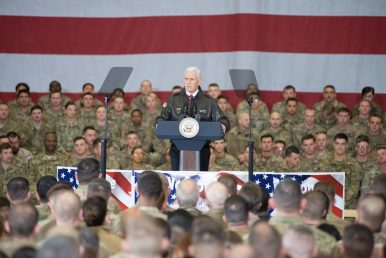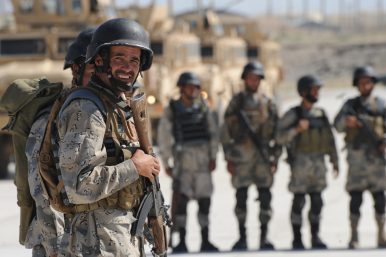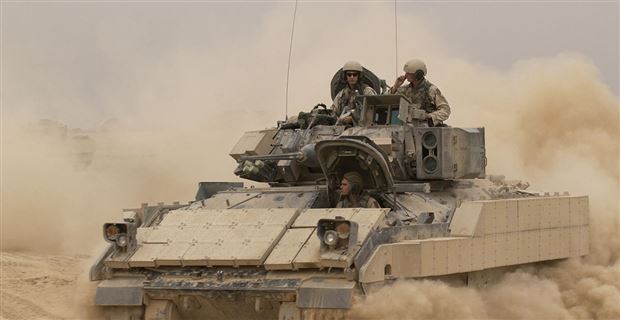Seven Foreign Policy Stories to Watch in 2018
-- Maj Gen P K Mallick,VSM (Retd)
“It’s hard to make predictions, especially about the future.” But a fair number of significant world events are ones we know are coming—call them the “known knowns.”
Council on Foreign Relations has come out of its list of seven known stories of this year which would be followed keenly in 2018. Any one of them could turn into the dominant news event of the year—or fade completely away. We’ll know in twelve months which will sizzle and which will fizzle. Of course there will be new stories which will hog the headlines. Here is the seven stories expected to dominate in 2018.
Iran’s Bid for Regional Hegemony. Syrian President Bashar al-Assad looks to be securely in powerin Damascus. Ditto Hezbollah in Lebanon. The Islamic State lost much of its territory. The Iraqi government retook the oil-rich city of Kirkuk. Houthi rebelshave Saudi Arabia bogged down in a quagmire in Yemen. Iranian involvementfigured prominently in all of these developments, which has entrenched Iranian influence across the region. While the White House wants to turn up the heat on Tehran, the question remains how far it will be willing to go. Iran will press its advantage wherever it can.
North Korea’s Nuclear Ambitions. Trump has vowedto prevent North Korea from gaining the capability to hit the United States with nuclear-armed ballistic missiles.Washington’s options for compelling Pyongyang to back down aren’t promising. China either can’t—or won’t—use its economic leverage to make North Korea cry uncle. The cost of U.S. military action would likely be steep—possibly even “catastrophic.” The current level of tensions creates the possibility that war will begin not through calculation but miscalculation.
Crisis in Venezuela. Venezuela has the largest proven oil reserves in the world. The country is gripped by a horrific economic and political crisis. As bad as things were in 2017 for Venezuelans, things could be even worse in 2018. The International Monetary Fund projects that inflation will exceed 2,300 percent next year.Venezuelans have taken to the streets to protest President Maduro’s dictatorial ways. More than one hundred protestors have been killed, but nothing has changed.
Trump’s Effort to Transform Trade. President Trump has signed a presidential memorandum pulling the United States out of the Trans Pacific Partnership (TPP). However, he didn’t impose tariffs on China or withdraw from the North American Free Trade Agreement (NAFTA), the Korea-U.S. Free Trade Agreement, or the World Trade Organization (WTO). That may soon change. The White House is moving to impose punitive actions on predatory Chinese trade practices, its demands for revamping NAFTA look to be unacceptable to Canada and Mexico, and it is waging a low-level war against the WTO. America’s trading partners are likely to retaliate. Trump’s trade initiatives won’t fix what bothers him: America’s yawning trade deficit. The United States runs a deficit because Americans consume far more than they save. Tweaking trade deals won’t change that. To make matters worse, the tax bill he has championed will likely make the trade deficit larger.
China’s Ambitions Abroad. Xi Jinping had a terrific 2017. He consolidated his hold on power and now ranks as China’s most powerful leader since Mao Zedong. Xi’s assertive foreign policy will likely mix soft and hard power. He will be offering substantial aid to countries throughout Asia under the banner of the One Belt One Road initiative. Most countries will find it hard to pass up these funds, even if they sometimes come with substantial strings attached. Countries in Southeast Asia will be watching closely to see whether, and how, the United States pushes back on China’s effort to make itself the regional hegemon. A world order may hang in the balance.
The Mueller Investigation. President Trump has called the investigation a “witch hunt,” and he dismisses allegations that his campaign colluded with Russia as “fake news.” Trump’s former National Security Advisor Michael Flynn has pled guilty to lying to the FBI, as has former Trump campaign advisor George Papadopoulos. Mueller also has indicted Trump’s former campaign manager, Paul Manafort and Manafort’s business partner and senior Trump campaign staffer, Rick Gates. Trump’s lawyers predict that the investigation will wrap up shortly; history suggests it could drag on for months. The investigation could plunge the United States into an unprecedented constitutional crisis. America’s democracy is being tested.
Democracy Under Stress. Democracy is under siege. Global freedom has been declining for over a decade. The problem isn’t just that emerging democracies like Thailand and Turkey have slid back into authoritarian rule. Many Western democracies are struggling. Warsaw has adopted anti-democratic laws, while Spain faces a secessionist movement in Catalonia. Centrist political parties across Europe have been losing vote shares to parties on the two extremes. Traditional center-left parties have had the most trouble, having suffered humiliating defeats in the Netherlands, France, and Austria among other places. But center-right parties are struggling as well, as recent elections in Britain and Germany attest. The United States still has a robust two-party system, but its democracy also seems far from its glory days. Some now see the United States as a “flawed democracy.” Authoritarian governments like China and Russia are both working, in different ways, to undermine free and fair elections across the globe. Is democracy doomed? No. It remains popular worldwide, even if it has become less so among young people in democratic countries. There will be important elections in 2018 that could reverse the negative trends, though they might also give us more “illiberal democracies.” Here’s the thing about democracy: it empowers the people. It’s up to them to use that power wisely.











/arc-anglerfish-arc2-prod-mco.s3.amazonaws.com/public/JSTOWTBRAJCQ7DWM7GTSEI572Q.jpg)

/arc-anglerfish-arc2-prod-mco.s3.amazonaws.com/public/DO7MECVY6RGRTCA7HMKNAUXIJY.jpg)
